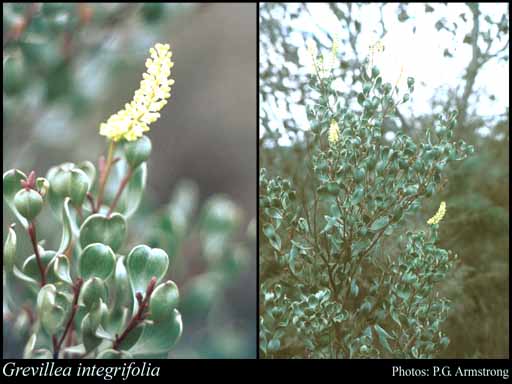- Reference
- A.DC., Prodr. 14:385-386 (1856)
- Conservation Code
- Not threatened
- Naturalised Status
- Native to Western Australia
- Name Status
- Current
Shrub, 0.6-2.5 m high. Fl. yellow/cream-white, Sep to Nov or Jan. Deep sand, lateritic sand, often with gravel. Sandplains, hillsides.

Scientific Description
Shrubs, 2-3 m high; branchlets hairy, not glaucous. Leaves alternate, 20-50 mm long, 4-12 mm wide, hairy, on the adaxial or abaxial surface, the hairs straight; lamina flat, clearly widest above the middle or more or less the same width throughout, entire, the margins flat. Inflorescences terminal, white or cream; pedicels 1.5-2.5 mm long. Perianth 3-4 mm long; tepals all free after flower opens, glabrous; ovary glabrous, stipitate, the stipe 0.5-1 mm long; pistil 6-8 mm long, white, pollen presenter conical, style glabrous. Follicles glabrous, not viscid, dehiscent, 9-11 mm long. Flowers in September, October, November or December. Occurs in the South-west (SW) Botanical Province(s), in the Geraldton Sandplains (GS), Avon Wheatbelt (AW) or Mallee (MAL) IBRA subregion(s).
Distribution
- IBRA Regions
- Avon Wheatbelt, Jarrah Forest, Mallee.
- IBRA Subregions
- Katanning, Merredin, Northern Jarrah Forest, Western Mallee.
- Local Government Areas (LGAs)
- Beverley, Corrigin, Cunderdin, Dumbleyung, Kellerberrin, Kulin, Pingelly, Quairading, Tammin, Wickepin, Williams.